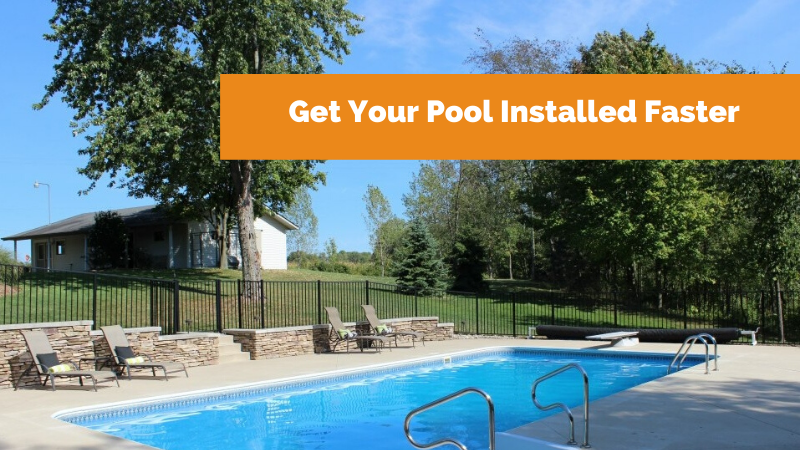
Shorten your pool installation time by checking these things off your to do list.
At Zagers, we see your excitement when you decide to purchase an above ground or in-ground pool. You’re ready to swim the next day! But pool installation can take time. Because we know you’d like to jump in as soon as possible, we suggest following these 6 steps to shorten the time from “Let’s get a pool!” to the day you’re actually relaxing in your own backyard oasis.
1. Check with your contractor about his or her schedule. When you make the decision to install a pool, you’re eager to get things moving. Talk to your contractor about their work calendar and when he or she can fit in your pool installation. Depending on when you purchased it, it may be a few weeks, months or more. In the meantime, you can tackle the rest of these tasks, so you’ll be ready when he or she is.
2. Know your Homeowner’s Association (HOA) Rules. Some neighborhood associations allow pools; others don’t. And some may only allow in-ground, but not above ground pools. Be sure to check your HOA’s rules as you may be surprised by what is permitted and what is not. For instance, some associations require an automatic pool cover to be installed on an in-ground pool because fences are not allowed.
3. Find out your local government’s regulations. You’ll want to determine local building codes and whether you need to apply for certain permits before you begin construction. Permits can take weeks or longer to receive (especially in the spring and summer months when building is at its peak). Start this process as soon as possible to make sure you have what you need when the contractor is ready to begin working on installing your pool.
4. Ask about zoning requirements, too. When you’re talking with your local township or city, find out whether there are restrictions regarding how far your pool must be from your home, your property line, septic tank, and other structures on your property, etc. Your pool contractor may be able to provide this information but it’s always a good idea to double check current rules and restrictions.
5. Determine the best placement for your pool. You’ve probably given some thought to how close the pool can be to your house. But when you’re deciding where to put a pool, you’ll want to find out where your septic tank, drain lines, and drain field are before installing your pool. If your property plat doesn’t show you where your septic tank drain lines are, you’ll need to get that information from your local building inspector or health department.
You’ll also want to consider your deck, landscaping, playground equipment, and more. Consider consulting with your pool contractor and/or a professional landscaper to use your space in the most practical and appealing manner.
6. Call Miss Dig before you dig. When you’re excavating for your pool, you’ll want to avoid sewer lines, water lines, natural gas lines, TV cables, telephone wires, etc. Call 811 to find out what’s below the surface before you begin excavation and you’ll save yourself a significant headache by not hitting important lines. Most pool contractors will do this on your behalf since it is time sensitive to the excavation schedule. This free service needs to be called at least 3 days prior and no more than 14 days before digging, so be sure to confirm who is taking responsibility for this critical step.
Once you’ve checked off these tasks off, you’ll be ready to go! Your contractor can begin excavation and installation, so you can enjoy your pool with family and friends as soon as possible.
If you have any questions on the entire process – from deciding which pool is right for you to pool installations, the experts at Zagers are here to help. Our professionally trained staff will be happy to answer your questions and provide advice based on what’s most important to you. Stop in to any of our 4 locations or request a quote online today.